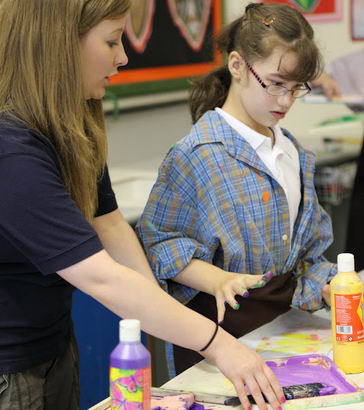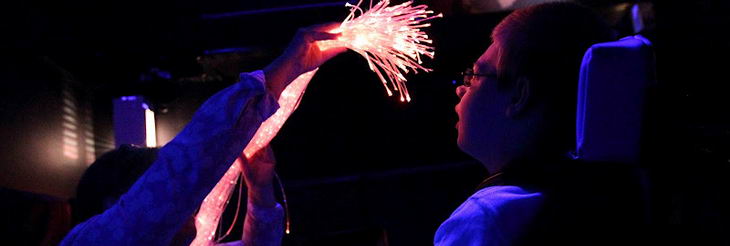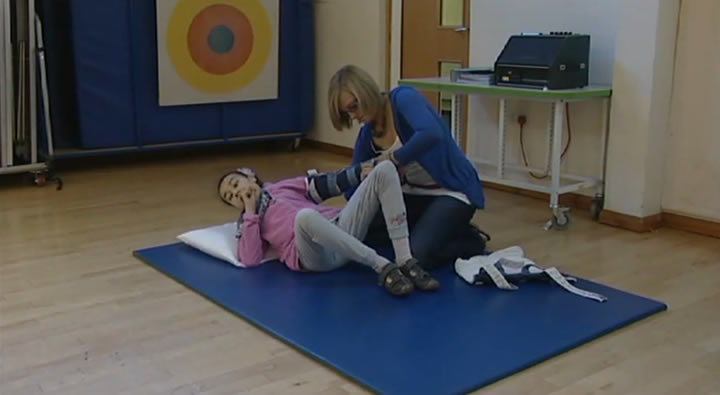
How do we make physical education an everyday part of a child's life?
Physical curriculum covers the development of:
- Eye/hand co-ordination and fine motor control;
- Posture;
- Spatial awareness; and
- Orientation and movement.
(Aird, 2001)
Dividing the curriculum into these four parts is a useful exercise. It ensures that all parts of the physical curriculum are covered.
These elements should not be carried out in isolation and minimal direct support should be offered with the activity. For
example, with painting, hand over hand support might see a teacher doing a lot of the activity for a child. This should be
avoided as it will encourage dependence
and helplessness.

It is the exploration and the physical practice that is key. A teacher's skill lies in the ability to make that exploration exciting to each and every individual.
Let's look at art as a case in point. Children should be allowed to explore art materials (paint, clay, fabrics, leaves, plastics, etc.).
Remember, it is not the production of an artistic work that is important but their experience of the activity. They need to be able to grasp, manipulate, feel and taste.

Switch work motivates children and helps them to develop fine motor movements.
An ISE was developed for adults with PMLD. However, the principles apply whatever the age (Bunning, 1996).
Its aim is to reduce the level of non-purposeful engagement (stereotypical actions, self injury and neutral behaviour) and increase the levels of purposeful interaction with people and objects.
The results showed an increase in purposeful interactions and a reduction in non-purposeful engagement after ISE.
Use of regular and routine physiotherapy and hydrotherapy is always a good starting point for the physical curriculum.
In the following clip a group of children receive physiotherapy in their school's gym
Many schools have limited access to physiotherapists. In this context, the Bobath approach is a useful form of physiotherapy for a number of reasons:
- It is not a rigid regime of exercises and is very much dependent on the strengths and needs of the individual pupil and the skills and expertise of the therapist;
- It explores ways of encouraging more natural movement patterns that can be integrated into everyday life;
- It is a trans-disciplinary approach that involves occupational therapy, physiotherapy, speech and language therapy and teachers and parents;
- It is ideal for school and home settings.
Return

Aird, R. (2001) The Education and Care of Children with Profound and Multiple Learning Difficulties, London: David Fulton.
Bunning, K. (1996) Development of an 'Individualised Sensory Environment' for Adults with Learning Disabilities and an Evaluation of its Effects on their Interactive Behaviours, unpublished thesis, London: City University.
Bunning, K. (1998) To engage or not to engage? Affecting the interactions of Learning Disabled adults, International Language and Communication Disorders, 33; 386-391.
Mayston, M. (2000) The Bobath Concept Today, talk given at the CSP Congress, accessed at www.bobath.org.uk/concepttoday.php on 20 August, 2011.
St. Margaret's School (2009) The Profound Education Curriculum, Tadworth: Profound Education.
